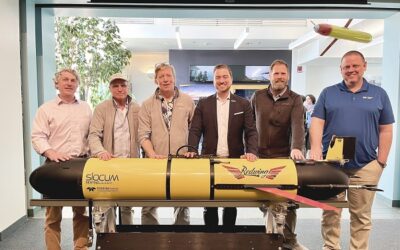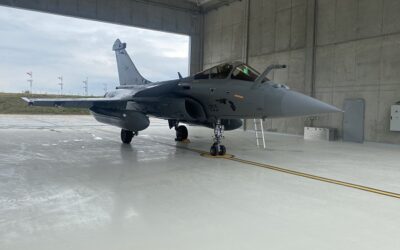Heavily involved in the war against drugs and organised crime
The Mexican Armed Forces have been heavily involved in the war against drugs and organised crime since 2006. In an interview last August, the Mexican Air Force Commander, Maj Gen Miguel Enrique Vallín Osuna, told MONCh that the first stage of modernisation, under the Mexican Defence Department’s Vision 2030, had been completed. That saw over 40 rotary-wing and more than 100 fixed-wing aircraft and two UAS delivered.
Helicopter Acquisitions
The most recent helicopter deliveries are 15 Sikorsky (a Lockheed Martin company) UH-60M BLACKHAWKs that fulfil SAR duties, often as part of anti-narcotics missions. The first six were formally inducted into the service in February 2016, with all 15 delivered by August 2017, the bulk of them equipped with M134 7.62mm Gatling guns, while five FLIR Star SAFIRE III EO/IR turret systems have also been supplied.
The Mexican Navy has also taken delivery of ten UH-60Ms to assist with anti-drug operations at sea, while the Police operate six older UH-60L and six UH-60M BLACKHAWKs.
In early April 2015 the first of 15 Bell 407GX were delivered. Today, along with several more aircraft, delivered in an unannounced order which Bell would not comment upon, they are operated by Escuadrón Aéreo 111, based at Base Aérea Militar (BAM) 5 – Capitán Emilio Carranza Rodríguez, in Zapopán, Jalisco. Configured for a variety of para-public tasks, including counter-narcotics missions, the single-engine helicopters work with fumigation squads, spraying marijuana and poppy crops. These squads are thought to work twice a year, based on the cycle of the drug crop. One of them was lost in November 2017.
They joined 13 Airbus Helicopter H225Ms (EC 725s) that entered service in July 2011 as tactical transports, flying with the 1st Air Group’s Escuadron Aereo 101 at BAM 1, Mexico City’s Santa Lucia Air Base. The tough nature of the operational sorties they participate in was highlighted on 1 May 2015, when one was shot down by a rocket propelled grenade (RPG) during an anti-narcotics mission. The helicopter had detected a convoy of ten trucks with armed gunmen but, owing to the rules of engagement, little could be done until it was itself fired on. The COUGAR crashed, leaving seven dead and 11 wounded and the incident led to many calling for a change in tactics. An attrition replacement was delivered in December 2018.
Training
On the training front, the service has modernised the way new pilots are trained, with the emphasis on new glass cockpits and simulation. This has led to the retirement of the 20 surviving SF260EUs and the 60+ Cessna (now Textron Aviation) 182 SKYLANEs and the delivery of 60 T-6C+ TEXAN IIs. The first were delivered to the Escuela Militar de Aplicacion Aerotactica de la Fuerza Aerea (EMAATFA) at BAM 11, Santa Gertrudis, Chihuahua, in August 2012. By July 2018 they had all been delivered. Four operational squadrons are understood to have been equipped with the T-6Cs, which supports the theory that they have replaced the older Pilatus PC-7s in an operational role.
A couple of years after the TEXANs were ordered, the air force acquired 25 Grob G120TPs. The company’s President and Chief Sales Officer, Karl Fuernrohr, told MONCh last year: “We trained several Mexican Air Force personnel here when we learned Cessna 182s were still being used for basic training. So we told them ‘Guys you don’t need to do that before they go into a TP,’ it’s just not needed. The [Air Force] Chief was sceptical, so we offered to train two pilots who had never flown before on the Grob 120TP here at our headquarters in Tussenhausen, near Munich. The only stipulation was they had to speak English and had passed their medical exams. When they came here in 2017, they spent 15 hours on the simulator and five hours flying before they went solo. It proved the high value of mixing the aircraft with flight training devices [….] We can take them all the way to Lead In Fighter Training (LIFT). We mix it with simulator hours and drastically decrease their flying time, even for take-offs and landings.”
Transport
The older C-130As and C-130Es were retired in 2007 and 2013 respectively, and the air force operated two ex-RAF HERCULES C1s acquired between 2003-2016. In November 2015, two ex-RAF C-130K HERCULES C3s were acquired and flown to Abbotsford, Canada, where Cascade Aerospace modernised them with the Collins Aerospace Flight2 advanced digital avionics by the end of 2017.
In early 2018, the company announced that it had also been awarded a contract for the avionics modernisation of the service’s sole L-100-30 aircraft. Cascade’s Chief Operating Officer, Kevin Lemke, commented: “The upgrade of this aircraft will establish a common cockpit configuration for the entire Air Force C-130 fleet, thereby enhancing fleet capability as well as providing efficiencies in maintenance, training, and operational availability.”
Mexico is the only air force that operates both the Airbus C295M and Leonardo C-27J, which usually contest each other for this kind of military role. Six Airbus C295Ms, on a 20-year lease from state-owned BANOBRAS Bank, were delivered to Escuadron 301 at BAM-1, Santia Lucia, between June 2010 and December 2011, while Alenia Aeronautica (now Leonardo) delivered four C-27Js to co-located Escuadron 302 between September 2011 and August 2012, to work alongside the former RAF C-130Js and L-100-30.
The two UAVs the commander referred to last summer are believed to be two DOMINATOR XPs, developed by Aeronautics Defense Systems. Based on a twin-engined Diamond Aircraft Diamond DA-42 but flown without a pilot, the DOMINATOR attracts less attention in the hazardous areas in which it tends to work. They are operated by the Sistema Integral de Vigilancia Aerea (SIVAM – Integrated Air Surveillance System), which is aimed at detecting suspicious or illegal flights and co-ordinating air, land and sea assets. SIVAM also operates four C-26B tracker aircraft, two Embraer 145MPs and a single EMB145SA airborne early warning and control (AEW&C) aircraft.
With no external threats, it is no surprise that the air force’s fleet of F-5s, acquired in 1981, is in poor shape and there is likely to be no replacement in the near future, as budgets are directed at fighting internal threats instead.
Alan Warnes

























